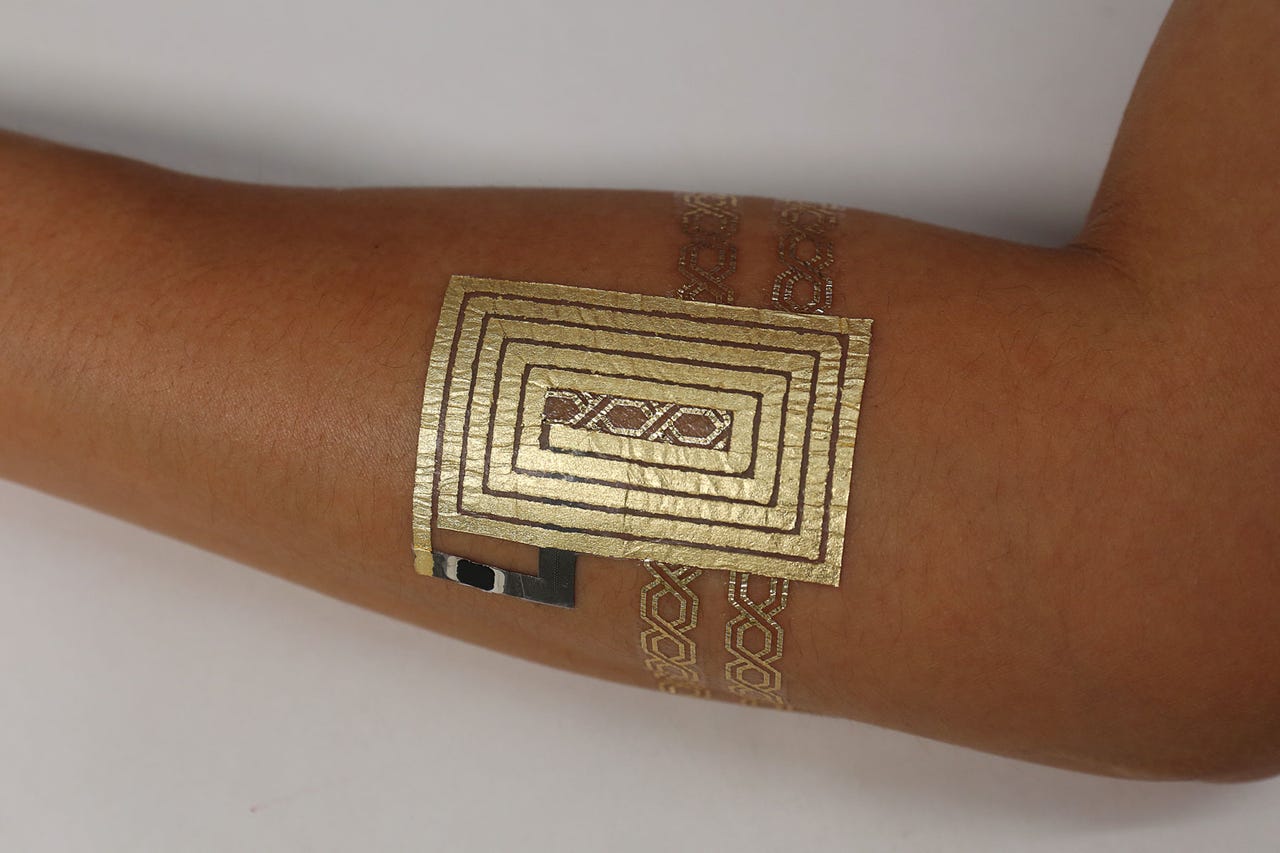Microsoft's, MIT's gold tattoos turn your skin into a UI for your phone


The researchers showed off an NFC chip-equipped gold tattoo that can control a wireless comms device.
Microsoft Research and PhD students at MIT Media Lab have created a series of wearable devices made out of gold-leaf tattoos.
The smart tattoos turn the wearer's skin into a new interface, enabling it to be used as a touchpad to control a mobile device, a display, or with the help of an NFC chip, a wireless communications device.
Tech Pro Research
MIT calls the technology DuoSkin, which it describes in a new paper as a "fabrication process" using gold metal leaf to create functional wearables for the skin.
That process involves creating the desired "skin circuitry" using graphic design software, and then making stencils from it to cut around. The gold leaf acts as the conductive material for whatever electronic device it is attached to.
One of the primary goals of the project was to demystify wearable tech by offering people a simple, cheap, and quick way to produce their own devices.
"DuoSkin draws from the aesthetics found in metallic jewelry-like temporary tattoos to create on-skin devices which resemble jewelry. DuoSkin devices enable users to control their mobile devices, display information, and store information on their skin while serving as a statement of personal style," the MIT students write.
"We believe that in the future, on-skin electronics will no longer be black-boxed and mystified; instead, they will converge towards the user-friendliness, extensibility, and aesthetics of body decorations, forming a DuoSkin integrated to the extent that it has seemingly disappeared."
The students wanted to test the durability of different materials and plot a method to produce wearable electronics cheaply and with easy-to-follow instructions.
One of the creations was a skin bracelet that acts as a slider to control music via Bluetooth on a smartphone. That device connected to an Arduino that's tucked under the wearer's sleeve and is used to detect touches, and wirelessly transmit data to the phone.
The students also recruited a small group of participants to test how easy it is for people of different backgrounds to follow the DuoSkin process. The participants designed custom versions of their own music controllers, all reporting it was fairly easy to work with.
As for costs, the most expensive item required was a $230 electronic cutter, while a packet of gold leaf cost $10, and NFC tags cost $2.50.